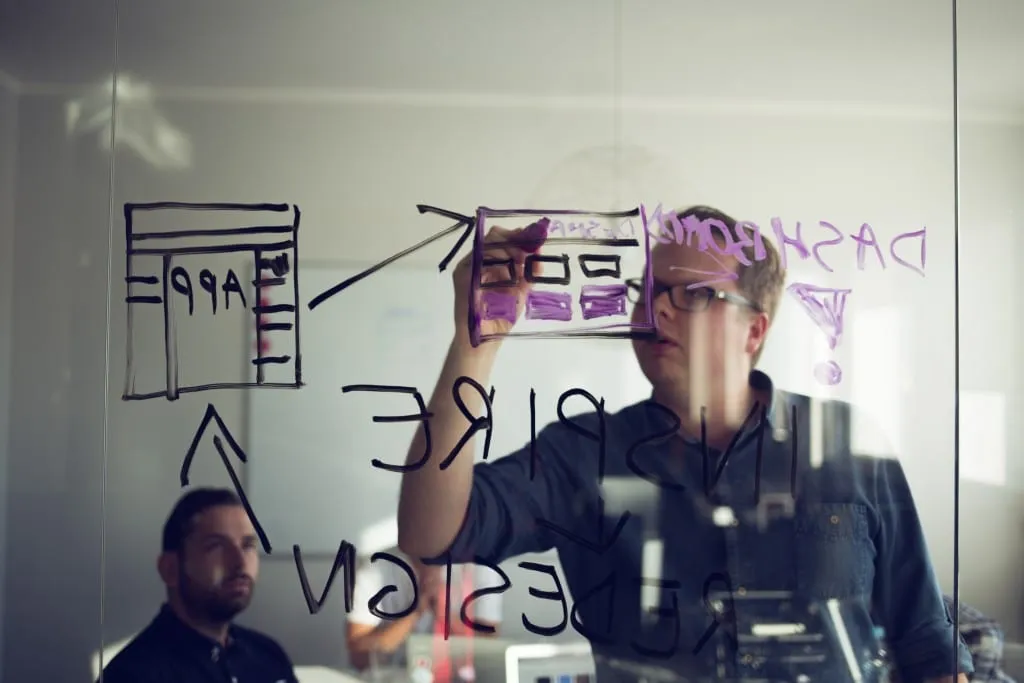One of the most powerful things a leader can do is listen.
It’s not always intuitive (or convenient) to check in with your team (especially about things unrelated to clients or projects) but it’s undeniably important.
Countless books and articles on management boil down to some form of “listen to your team, then act accordingly.”
But what does that mean in a design context? To remind you to listen effectively, here are a few of my favorite questions to ask your entire team (individually or in a group) on a regular basis.
1. What was something that bugged you at work yesterday?
The idea here is to learn about smaller or near-term issues or annoyances. It’s a way to address minor concerns before they become big ones.
I try to be a hands-off manager, and I don’t meddle unnecessarily. I give advice, but I don’t micromanage, and I don’t act on everything I hear. However, asking questions like this is a chance to notice bigger patterns and to ultimately alleviate potential issues with people or process.
As a general guideline, if you hear several complaints about the same person or process, it’s time to address it. If instead you hear that there’s not enough reggae in the music mix, you’ve probably got a happy team.

Mostly, it’s just helpful to allow team members to vent. That goes a long way. Work environments are highly stressful, and even the most even-keeled need to let off steam once in awhile.
2. What small or large successes have you had recently?
Perhaps because we’ve all experienced the imposter syndrome at some point, most designers don’t give themselves nearly enough credit. Or maybe they’re too busy to stop and reflect on their successes. In either case, asking this simple question forces people to recognize their own efforts and remind them that they’re making progress each day.
In addition, as a design leader, it’s easy to miss and overlook smaller successes. We don’t always see the challenges and solutions each team member faces each day. Unfortunately, without seeing that stuff, it’s too easy to forget it’s happening. This helps the manager as much as the team member. As a bonus, it feels amazing as a manager to know that things are getting done (and getting done well) without any direct input.
3. Is there anything you’re stuck on?
This question is a good way to get a temperature reading for each project. More importantly, it can also save a lot of time if you can help someone get unstuck.
I’m not talking about throwing away your plans and diving into code with someone. Sometimes, it’s as simple as pointing them in the direction of a solution.
Typically, the right direction is a how-to article or an example of how someone else handled a similar problem. The idea isn’t to solve all of your team’s issues for them. It’s to give them the tools to find solutions on their own. A manager’s experience is one of his or her greatest assets. The more experienced the manager, the more likely they’ve overcome a similar situation in the past.
4. Have you seen anything recently that you wanted to copy or wished you’d thought of?
This is just a great way to learn about what people are thinking about outside of work. Discussing it out loud may lead to better projects, but also, it’s a question that a team member can freely answer, with no deadlines, feelings, or politics attached.
I like this question because I value my designers’ and developers’ opinions on what’s awesome and what’s played out. I also love discussing design and usability, and this question can lead to debates about aesthetics versus function or whether something is too “designy” to be effective.
5. Have you come across anything the team should read or think about?
Sharing videos and articles is huge in today’s professional world. It’s all over social media, LinkedIn, and even our emails. But, for whatever reason, it’s relatively absent in face-to-face conversation.
A junior designer or intern may not follow the creative director on Twitter, but they can benefit so much from seeing what their boss is reading and what their peers are thinking about. I tweet articles all the time, but I don’t drop urls in normal conversation.
Conversely, imagine how beneficial it is for the team leader to gain trend and industry insight from the least jaded newcomers?
Everyone has great information to share, and all it takes is to ask. I’ve found that just asking is truly the best way to facilitate this, and making the process more formal is tricky and has overhead. At Brolik, we’ve tried many different ways to post, save, and share articles. We even tried curating articles in an email list for a while. Nothing seemed to stick. Sure, monthly Movie Fridays have been pretty successful, but there’s so much information we pick up between them that could help the entire company grow.
Now, I just ask what people are reading and thinking about, and if something good comes up, we share it with the whole team.
6. Are there any good webinars or events coming up?
This question has two benefits. First and foremost, it encourages professional development and reminds the team to pursue ongoing career education. Second, it gives you leads on opportunities for team building and inspiration.
I remember the exact moment very clearly: it was 2011, and a conference speaker held up a copy of Ethan Marcotte’s Responsive Design. He then told us to buy it and begin reading it immediately upon leaving. We had no idea what responsive design was, but I could take a hint, so I read it.
We ended up shifting our agency’s focus and building our CMS and sales strategy around responsive design for the next several years. It all started by asking: “Are there any events coming up we should look at?”
7. Have you seen any new tools we could look into?
This is similar to webinars and events, but it comes from a more practical, day-to-day angle. Shiny new tools, techniques, and frameworks are literally too common in tech and design, and there’s no way to keep up with them all and still hit project deadlines.
So how do you know when to switch from Adobe to Sketch? When enough of the team has tried it on a freelance project or read enough to convince them, and they discuss it.
Some of your team’s biggest daily frustrations are centered around the tools they use. They may want to suggest improvements but feel it’s not their place. Ask them specifically to voice those needs. Then they’re not “asking for things.” They’re just answering a question.
When someone suggests a new tool, give the entire team a chance to check it out before implementing it into your project workflows. Not everyone will be on board with every tool, but open communication will solve a lot of process issues surprisingly fast. The whole team will get more efficient— not just the person who suggested it.
8. How’s that side project coming?
This might be my favorite. It’s the hardest one to remember to ask, though. As a manager, showing an interest in someone’s personal life is an important part of the relationship.

Side projects are where many ideas are born and where skills are honed. They help develop well-rounded, independent thinking and train people in different disciplines. For me, as soon as I learn something new on a side project, I find a reason to use it on a work project. That can benefit everyone on the team and improve your product or service.
Conclusion
Ultimately, whatever form these questions take and in whatever frequency you ask them, the idea is always to improve team members’ lives, company processes, and ultimately the product or products you’re building.
Staying engaged takes some effort, but it always pays off. Designers are trained to be inquisitive, so why not apply that towards your team? As it turns out, asking questions is one of the easiest ways to engage your team.







